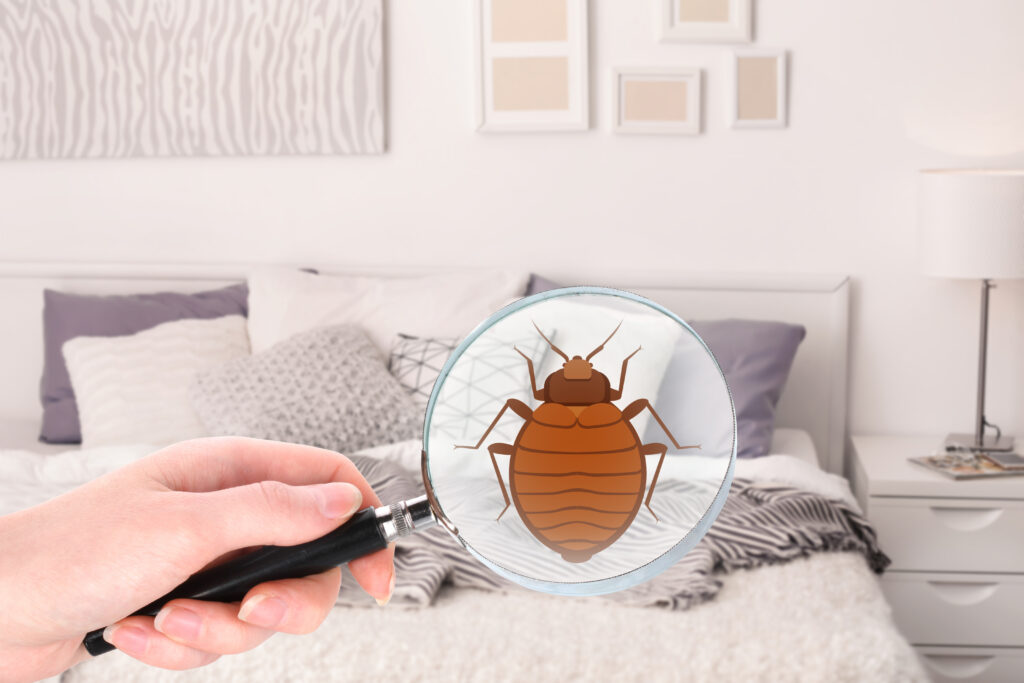Understanding the Lifecycle of Parasites for Targeted Control Methods
Recognizing the lifecycle of bugs is a basic element of efficient insect management strategies. By comprehending the numerous phases of advancement that insects undergo, an extra targeted and specific strategy can be taken on to manage their populations. This knowledge not only clarifies the susceptabilities within the bug lifecycle however also leads the means for carrying out tactical steps that can disrupt their development and reproduction cycles. Through a deeper understanding of how parasites flourish and advance, customized control techniques can be developed to deal with specific factors in their lifecycle, eventually leading to even more successful pest monitoring results.
Significance of Recognizing Bug Lifecycle
Comprehending the lifecycle of bugs is crucial for establishing effective and targeted control methods in pest management. By understanding the numerous phases a parasite experiences from egg to adult, parasite control professionals can recognize vulnerable points in the lifecycle where intervention can be most effective. Understanding when larvae are most energetic can aid determine the ideal timing for using larvicides. In addition, understanding the lifespan of an insect types can help in forecasting populace development patterns and possible problem risks.
In addition, identifying the details ecological problems needed for every stage of the insect's lifecycle can assist decisions on environment adjustment or exemption methods to disrupt the lifecycle and reduce parasite populaces. This understanding enables pest management specialists to carry out proactive measures as opposed to depending solely on responsive treatments, resulting in even more lasting and long-term pest control remedies. Eventually, a complete understanding of insect lifecycles encourages bug control specialists to tailor their approaches successfully, making best use of and lessening environmental influences control results.
Key Stages in Pest Growth
To efficiently execute targeted control techniques in insect administration, a vital element lies in comprehensively identifying and understanding the key phases in bug advancement. Insect development generally consists of numerous vital phases that are important for their lifecycle and administration.

Vulnerabilities in Bug Lifecycle
Throughout the various phases of a pest's lifecycle, unique susceptabilities emerge that can be purposefully targeted for effective control procedures. One vital susceptability hinges on the egg phase, where pests are typically more prone to particular insecticides or organic control agents because of their soft external covering, making them simpler targets for treatment. In addition, the larval or nymph stage provides susceptabilities as insects go through quick growth and advancement, calling for high energy usage that can be manipulated by interrupting their food sources or introducing development preventions. Pupal phases, characterized by immobility and improvement, supply a home window for targeted control with physical obstacles or certain therapies that hinder successful introduction. Ultimately, adult insects, while a lot more resistant due Extra resources to their reproductive capacity, can still be prone throughout breeding or egg-laying tasks, which can be interfered with through pheromone traps or sterilization methods. Comprehending these susceptabilities in the parasite lifecycle is vital for establishing specific and reliable control techniques that efficiently handle bug populaces while minimizing environmental impact.
Carrying Out Targeted Control Steps

Executing targeted control measures commonly involves a multi-faceted strategy. This may consist of habitat adjustment to make the environment much less hospitable to bugs, such as removing standing water for mosquito control or securing entry points for rats. Additionally, organic control methods can be used, where all-natural predators or virus are introduced to keep bug populations in check.
Chemical control, such as the cautious application of chemicals, is another typical approach. Nevertheless, it is essential to utilize these materials sensibly to decrease environmental influence and potential damage to non-target varieties. Integrated Pest Administration (IPM) approaches that integrate numerous control measures in a coordinated and sustainable way are commonly the most efficient in attaining long-lasting insect administration objectives. By applying targeted control actions based upon an extensive understanding of bug lifecycles, bug populaces can be successfully managed while lessening threats to human health and the environment.
Boosted Parasite Monitoring Practices

Additionally, the unification of biological control representatives, such as natural killers or pathogens of insects, can aid minimize reliance on chemical pesticides and advertise an extra balanced community. Implementing physical obstacles and traps can additionally become part of improved bug management techniques, offering safe and targeted options for insect control. Additionally, using scents and various other semiochemicals can interfere with pest breeding patterns and interaction, resulting in minimized pest populations in time.
Conclusion
To conclude, recognizing the lifecycle of pests is essential for efficient bug monitoring strategies. By recognizing crucial stages in insect advancement and vulnerabilities in their lifecycle, targeted control procedures can be carried out to reduce insect populations. Enhanced parasite monitoring methods can assist minimize the reliance on broad-spectrum pesticides and promote even more ecologically pleasant and lasting insect control techniques. This understanding plays a crucial role in maintaining healthy and balanced communities and agricultural efficiency.
Comprehending the lifecycle of insects is crucial for establishing reliable and targeted control approaches in insect management. By understanding the numerous phases a parasite goes through from egg to adult, insect control professionals can identify prone points in the lifecycle where treatment can be most successful. Inevitably, a complete understanding of pest lifecycles equips pest control professionals to tailor their methods effectively, lessening environmental effects and taking full advantage of control results.
By applying targeted control steps based on a complete understanding of pest see this lifecycles, insect populaces can be properly controlled while reducing threats to human health and the atmosphere.
By recognizing key stages in insect advancement and susceptabilities in their lifecycle, targeted control measures can be executed to lessen parasite populaces.